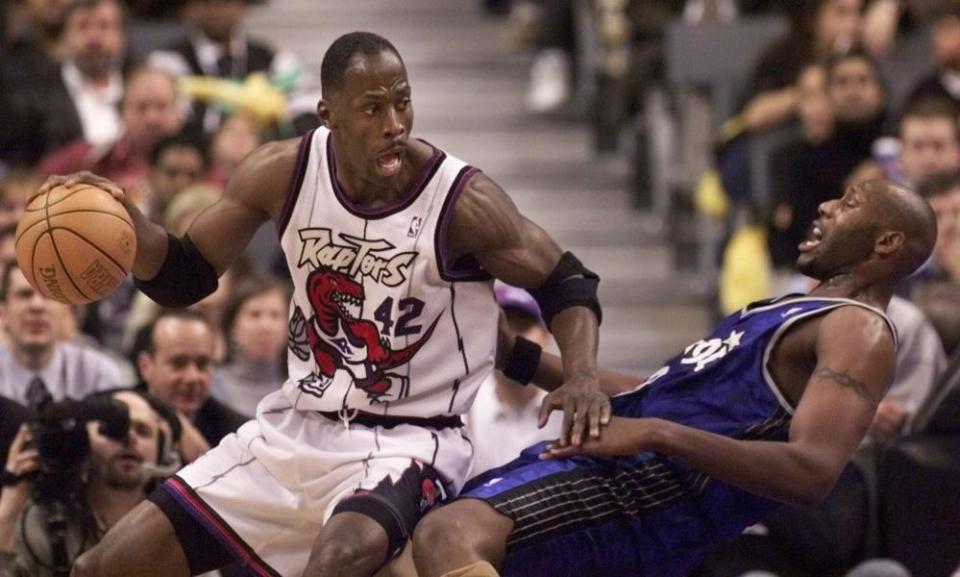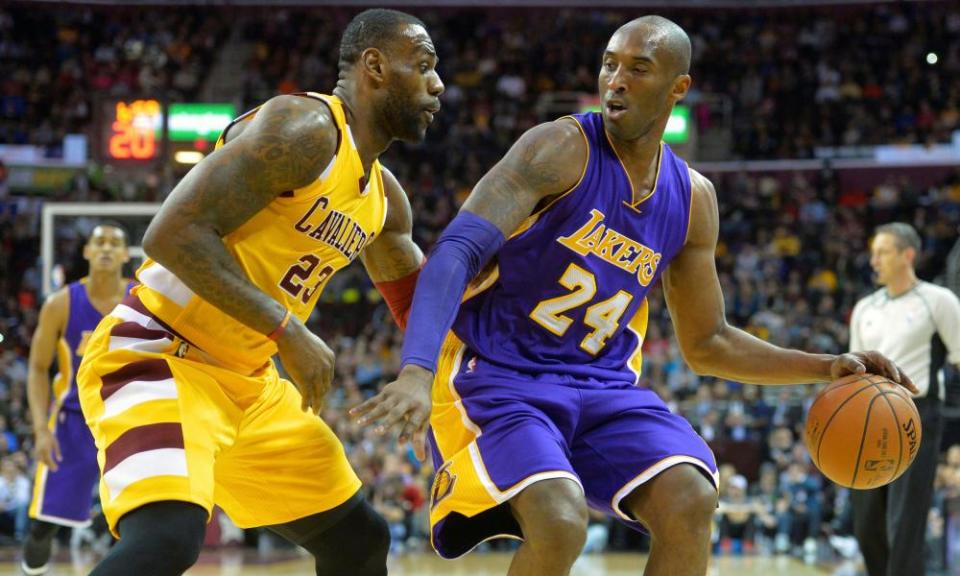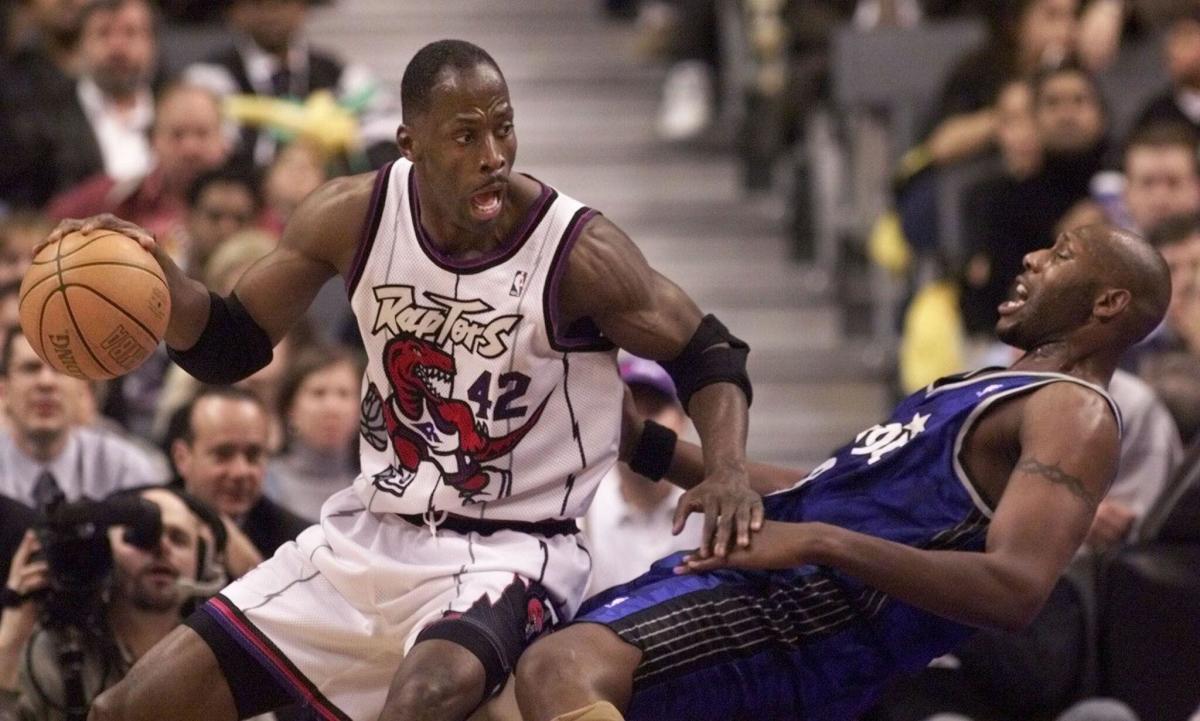
Kevin Willis remembers encouraging Tim Duncan to keep going. The two former All-NBA players, who won a championship together in San Antonio in 2003, chatted when Duncan’s career was winding down in 2016. “The Big Fundamental” was to retire after his 19th season, and Willis practically pleaded with Duncan to give it one more year so that he could enter one of the few NBA “clubs” that’s eluded him. The 20-plus-seasons club.
Willis had been one of only eight members of the club, alongside Vince Carter, Jamal Crawford, Robert Parish, Kobe Bryant, Dirk Nowitzki, Kevin Garnett and Kareem Abdul-Jabbar. That was it – until this season. Two more players are adding their names to that vaunted group. One is the undrafted Miami Heat lifer Udonis Haslem. And the other is maybe the greatest hooper of all time: LeBron James.
To remain in the league that long takes talent, health, value to a locker-room, adaptability and luck. Even some of the greatest of all time, like Duncan, couldn’t quite hold on. For James to do it, while also being one of the best players in the NBA each season, is perhaps his most significant achievement.
Related: In the land of the giants: does size really matter in the NBA?
So how has James been able to play at sky-high levels for so long? It’s not been easy, although he has been helped by the fact that he bypassed college, unlike most NBA stars.
“Bron has done a tremendous job,” Willis tells the Guardian. “Not only just his numbers, his abilities and skill out there on the court, but to display that given all the minutes logged and how far he’s gone into the playoffs – to be able to play in your 20th year and do what he does is a hell of an accomplishment. That’s huge. I welcome LeBron into the 20-plus club.”
Willis says he remembers being a young player and watching Abdul-Jabbar play season after season. It was something Willis never dreamed he could do upon entering the NBA with the Atlanta Hawks out of Michigan State University in 1984. But after 10 seasons, he realized time had passed “pretty fast.” Every year after that, he just kept going. In a way, he was “chasing” Abdul-Jabbar and another all-time great, Parish, two players who embraced new sources of training like yoga and martial arts.
Willis says he was “fortunate” to be seen in NBA circles as a good locker-room guy. Someone who was committed to the game, who loved and respected it. He was vocal, too, as a leader. Willis backed it up with his playing skills, earning All-Star and All-NBA nods in the 1991-92 season, averaging 18.3 points and 15.5 rebounds a game in 81 contests. Willis, who was known as the NBA’s strongest man, worked especially hard on his conditioning. He was always fast, setting one-mile records in high school and college – a particularly impressive achievement given that he weighed 245lbs – and he worked with strength trainers in Atlanta.
“Even though I was strong, I knew I had to get stronger if I wanted to be one of the forces in the league,” Willis says.
Knowing he had to go up against other Adonis athletes, from Buck Williams to Charles Oakley, Willis trained every day, working out five-times a day with weights. He ran often, too. After 19 years, he landed with the Spurs (and Duncan), and while he wasn’t scoring or rebounding in double-digits any more, he provided necessary backup minutes, even starting in six games. Willis played two years with San Antonio, then one more year with Atlanta. He sat out the next season and was picked up for a handful of games by the Dallas Mavericks. He played from 1984 to 2007.
“Before I knew it,” Willis says, “I’m going to San Antonio and I’m in my 19th year. I was like, ‘I’m on Robert Parish’s heels now!’” Willis, who now runs a successful clothing business that caters to big and tall men, shares membership of the 20-plus club with some of the greatest to have played the game. Nowitzki and Bryant achieved the mark with a single franchise – the Mavericks and Lakers, respectively. Garnett and Carter, as they aged, became mentors for younger teammates. Parish, too. Crawford scored 51 points in his final NBA game. Abdul-Jabbar earned a farewell tour, receiving a rocking chair from teammates. Today, Haslem is practically a coach on the Heat roster, and a team enforcer. James, though, is still playing at All-Star level, even if his numbers are down on his career average.
But he’s also only averaged about 55 games the past four seasons, whereas he was in the 70s in the 15 campaigns prior. And this speaks to the toll basketball takes on even a supreme athlete’s body. Bill Russell, Larry Bird and Magic Johnson each played 13 years. Wilt Chamberlain and Oscar Robertson played 14. Michael Jordan, who many consider the greatest of all time, played 15, which included parts of five seasons off. To play in the league means traversing miles on the court and in-flight from city to city. While modern players enjoy charter flights, those who came before them often didn’t. Steph Curry, who is also in his 14th year, has talked about what Father Time (James’s current commercial foe) can do to the body and psyche.

Willis was lucky. While he did incur a “freak” foot injury during an offseason that forced him to miss the 1988-89 season, outside that he averaged about 80 games a year for his first 10 in the league. In that span, he also averaged 14.5 points and 10 rebounds. He then aged gracefully, serving stints on several rosters as a valued starter and role player.
“My rookie year was just go-go-go,” Willis says. “As I started to mature, I started to understand the pace of the league, the way the game was played. As I got older, my body never gave in. I never felt that my body couldn’t take it any more. It was never like that. In San Antonio, I was still beating all the power forwards and guards in training camp in sprints. My body responded because of how I took care of it.”
For Willis, who today is considering producing a television series about those who have played 20-plus-years in professional sports, body maintenance is paramount. He’s 7ft and that was especially valuable in the 80s and 90s when the game was more about physicality and proximity to the hoop. But Willis was fast, too. (He ran sub-five-minute miles in high school and college.) He was dedicated and egoless, especially as the years went on, flexible as a starter or backup, willing to spell players like Hakeem Olajuwon on the Houston Rockets or Duncan on the Spurs. “Whatever I can contribute to winning,” he says, “I’m going to do.”
Willis’ selflessness was a big reason for his long career. In fact, he remembers talking about all of this to his teammates in Toronto in the late 90s. Carter, who was a star with the Raptors, played for 22 years in the league, learning to adapt in his later seasons, coming off the bench and acting as a mentor to young stars like Atlanta’s Trae Young. At his peak, Carter was a 27.6 points per game scorer. In his final year with the Hawks, he averaged five points, playing in 60 games. Willis knows what that type of career evolution can mean. But he, like Carter, embraced it.
“I was always grateful and appreciative of a team saying, ‘This guy is in his 16th, 17th year and we want him on our team,’” Willis says. “I’m not going there with this disgruntled, messed up attitude.”
Over the course of his career, Willis watched the league change. It was physical when he started and still boasted some of that same punch when he retired. But as he left the NBA and shooting became more of a priority, Willis has seen it lose some of its hard edge. He says he loves players like Curry and his “Splash Brother” teammate, Klay Thompson. But he wishes the center position boasted a bit more oomph. He says most are simply “stretch-fours.” Pointing to Joel Embiid, Willis says he wishes the Philadelphia 76ers star went down low more often, instead of shooting so many jump-shots. But that’s just the way the game is played now. The only constant in life is change, after all. Willis laughs about it, thinking back to his days with the Raptors when he used to absorb barbs from teammates like Carter and his cousin, the high-flying Tracy McGrady.
“Vince was a rookie when I was in Toronto,” he says. “He and T-Mac, those guys used to tease me. I was in my 16th year, and they were saying ‘OG this and that.’ And I’m like, ‘Yeah, that’s right! You better hope you get to this point!’ Then when Vince got to 20 [years] and he was in Atlanta, I said, ‘You remember all that in 1999, 2000? Now you see what I was talking about!’”
In other sports, there are stars who have achieved great longevity, too. Nolan Ryan played 27 seasons in MLB. Gordie Howe played 26 in the NHL. And Tom Brady is in his 23rd season in the NFL. In the NBA, Carmelo Anthony, if he’s picked up by a team this year, will also hit 20. But for James, given the levels at which he can still perform, it’s unclear where, exactly, his finish line will be. Maybe he will be the first to play for 25 seasons. Time will tell.
“When you get to 20, man,” Willis says, “it’s like, wow.”




